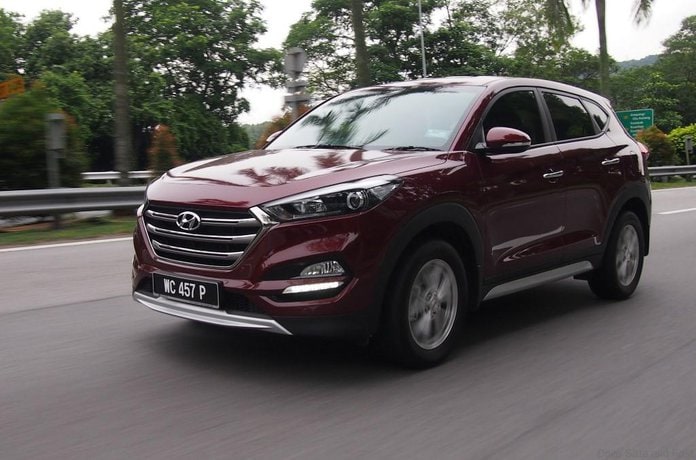No area of this all new 3rd generation Tucson crossover utility vehicle was left untouched by Hyundai engineers, but particular attention was placed on re-engineering the chassis for improved ride and handling, and importantly, better NVH (noise, vibration, and harshness) characteristics. The entire body shell has been made stiffer and lighter thanks to extensive use of advanced high-strength steel, and the use of Tailor Welded Blanks (TWB) reinforces key structural members.
Not surprisingly, the 2016 Tucson platform is larger than the previous generation’s; however, engineers focused on improving width and wheelbase for greater ride comfort and linear stability.
Compared to the 2015 model, the new Tucson is 1.1 in (27.9 mm) wider, with a 1.2-in (30.5-mm) increase in wheelbase. The front and rear overhangs were increased “in smaller proportion,” centering more of the Tucson’s mass within the wheelbase for better handling response and control. The CUV is 3 in (76 mm) longer overall than the outgoing model, at 176.2 in (4475 mm).
To enable the suspension refinements to be more effective, Hyundai engineers focused on increased use of advanced high-strength steels (AHSSs) and “advanced aerospace-based, high-strength adhesives.” The entire Tucson body and chassis is more rigid, using 51% AHSS—greater than 60 kg/mm2 (590 MPa)—compared with 18% for the former model.
Another thing that Hyundai engineers did which was very similar to what Hyundai did with the lucury Genesis cars, was to use a tremendous amount of high-strength adhesives. Hyundai engineering went from no adhesives, just a welded structure on their outgoing Tucson model to now over a football field in length of adhesives 335ft (102 m), to be exact. Not only does this help in body strength, but also in NVH by isolating noise better than just welding. The result of such efforts is a 48% improvement in body rigidity.
One area that benefits from the employment of AHSS is a “world’s first” shock-absorber mounting structure for this 2016 Tucson. The CUV employs a dual-reinforcing panel rear wheelhouse design, which optimizes panels that are prone to vibration, resulting in a 109% increase in rigidity, reduced road noise levels, and ride and handling improvements. Traditional designs employ only one reinforcement.
Hot-stamped steel is the highest stiffness steel we use. Generally it is used for crash [protection], but we also use it for the [integrated dual-member rear wheelhouse] structure.
In terms of the rear suspension towers, it’s to make the attachments stiff enough to where we increase the envelope of tunability of the shock absorbers,” he continued. “Once the body becomes stiff to the point where it deflects very little, all the energy from the road is absorbed by the shock absorber and that’s a tunable variable.
The spring seat on the underside of the BIW wheel well, comprised of 100 kg/mm2 (980 MPa) High Strength Steel (HSS) and hot-stamped steel; on the other side, engineers sandwich it with another piece of hot-stamped steel, so it is all bracketed in and takes all the forces right where it matters.
The entire Tucson chassis is more rigid, now using more than 50% Advanced High Strength steel compared with 18% for the former model.
Engineers in Korea began working on the solution since the previous generation, after identifying the rear suspension mount as an area that needed improvement. HSS being a “core technology” for Hyundai, its employment for this application made sense.
